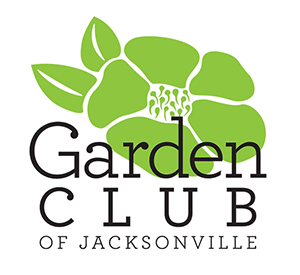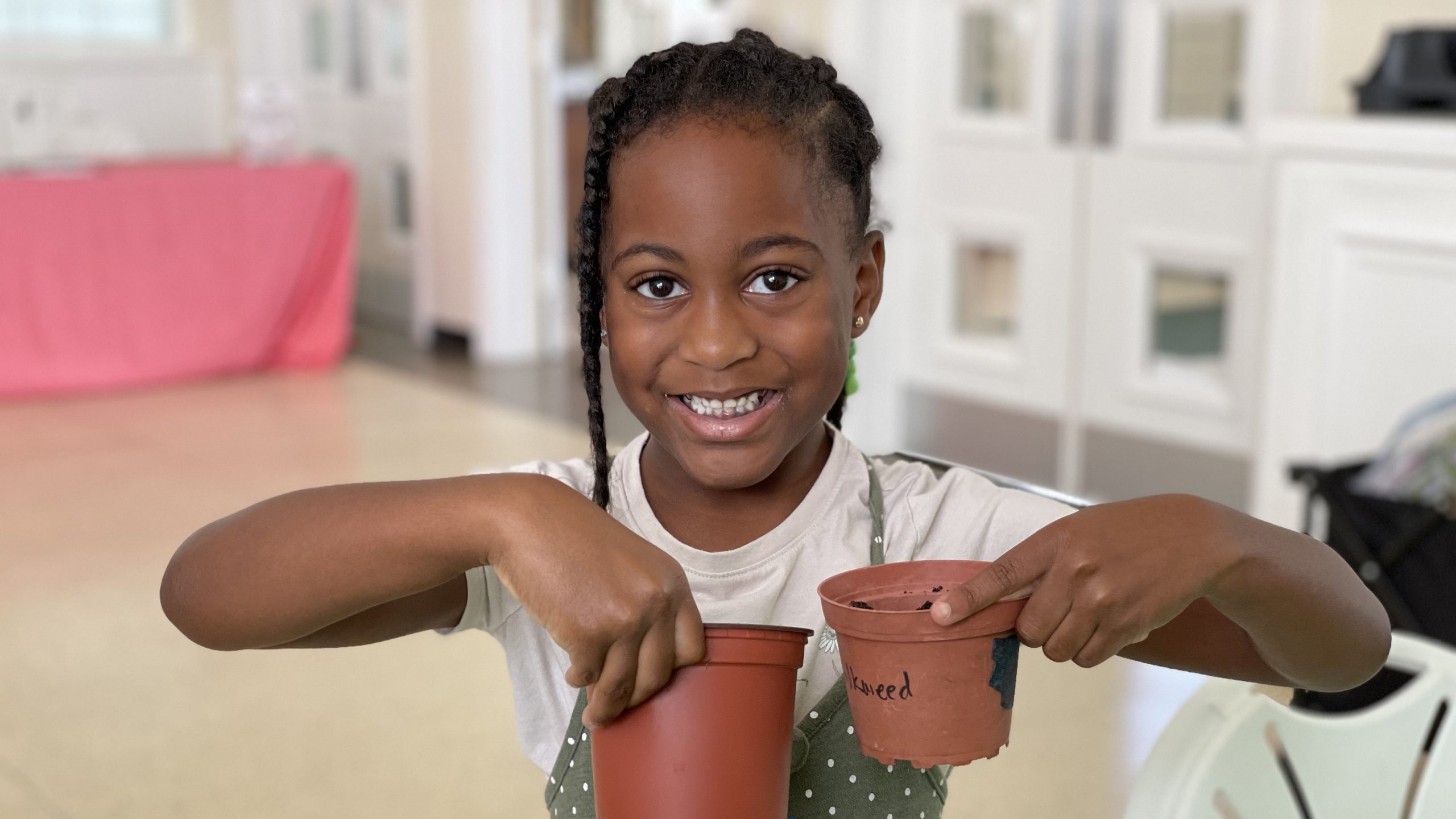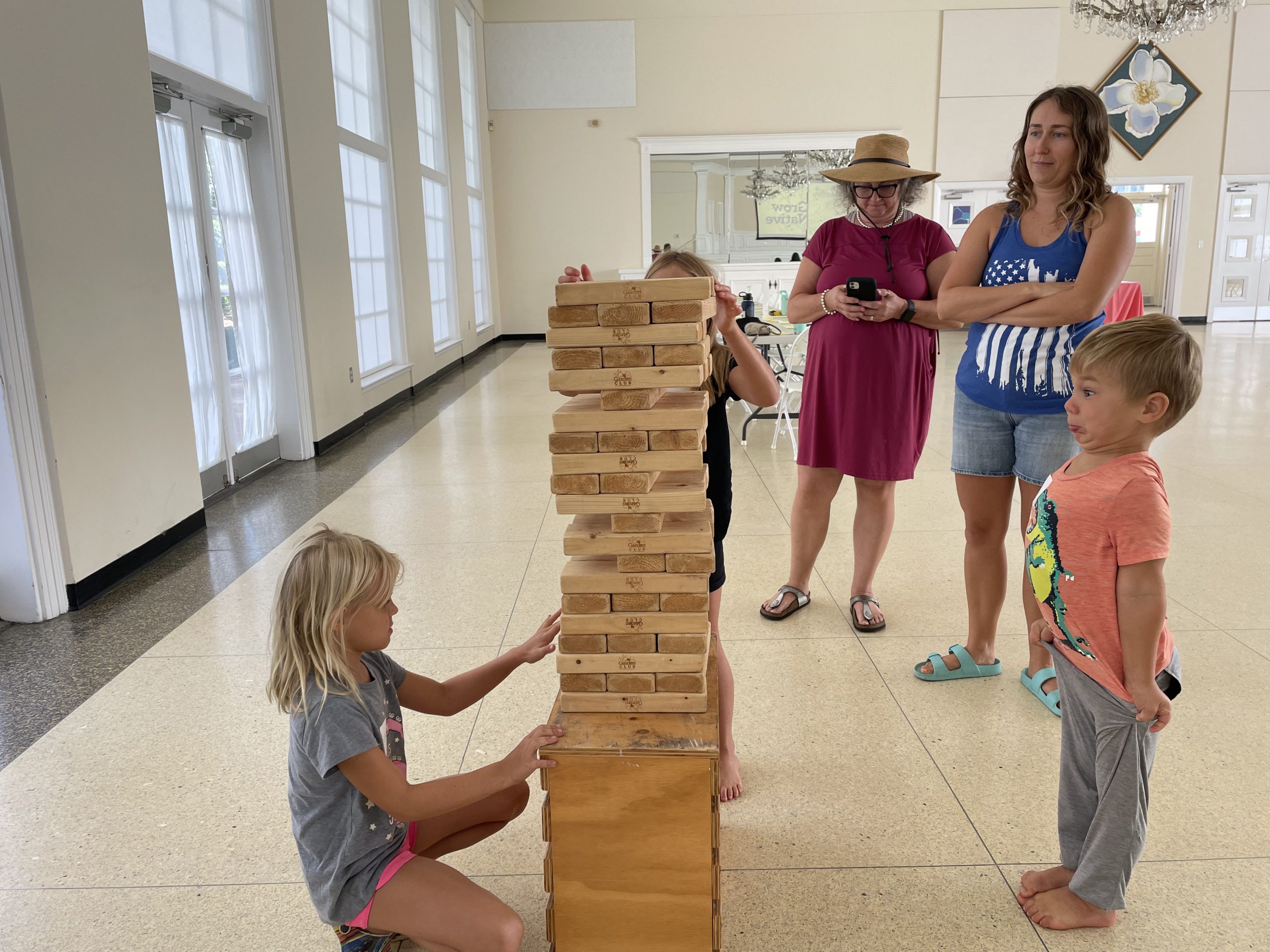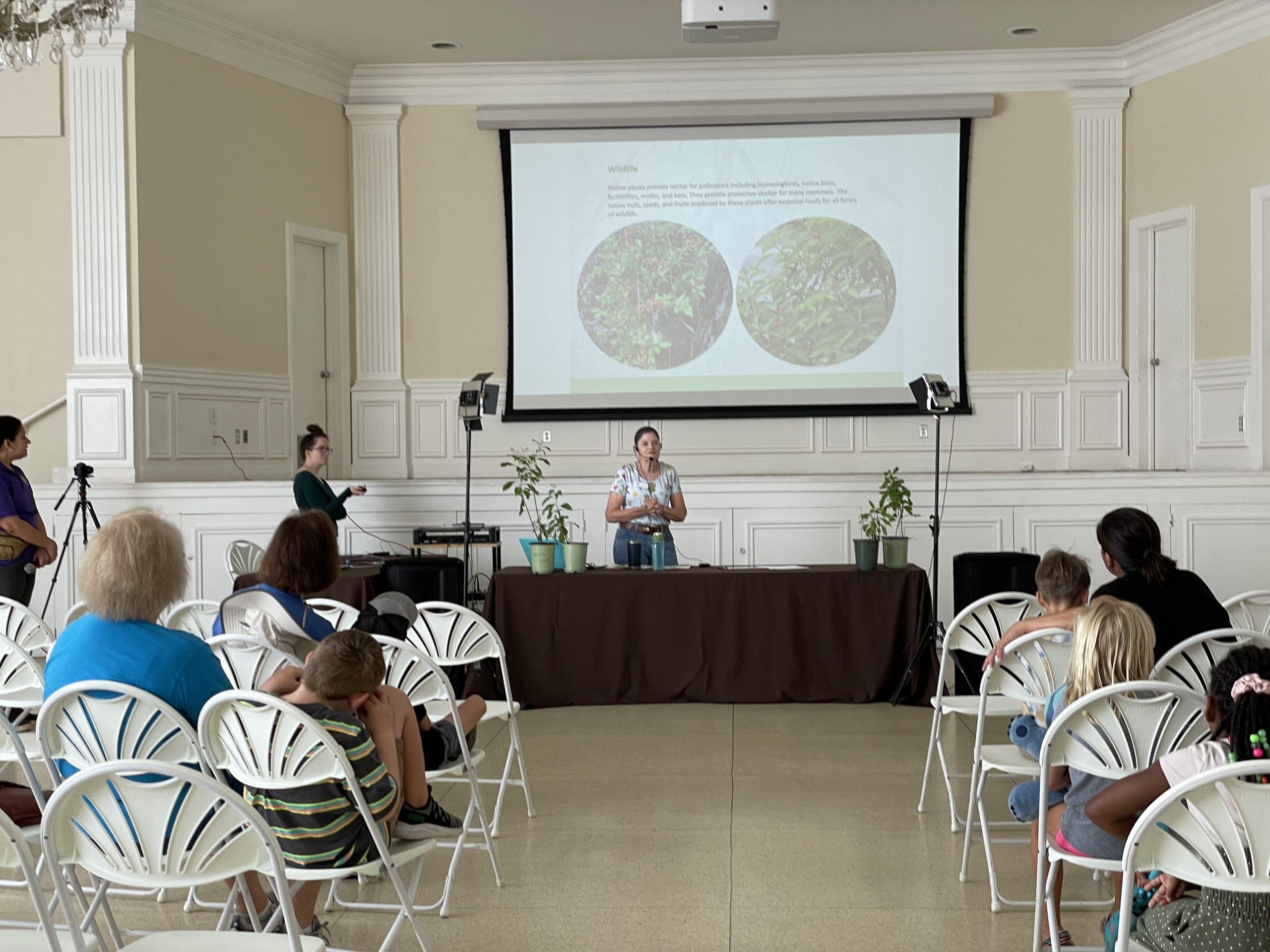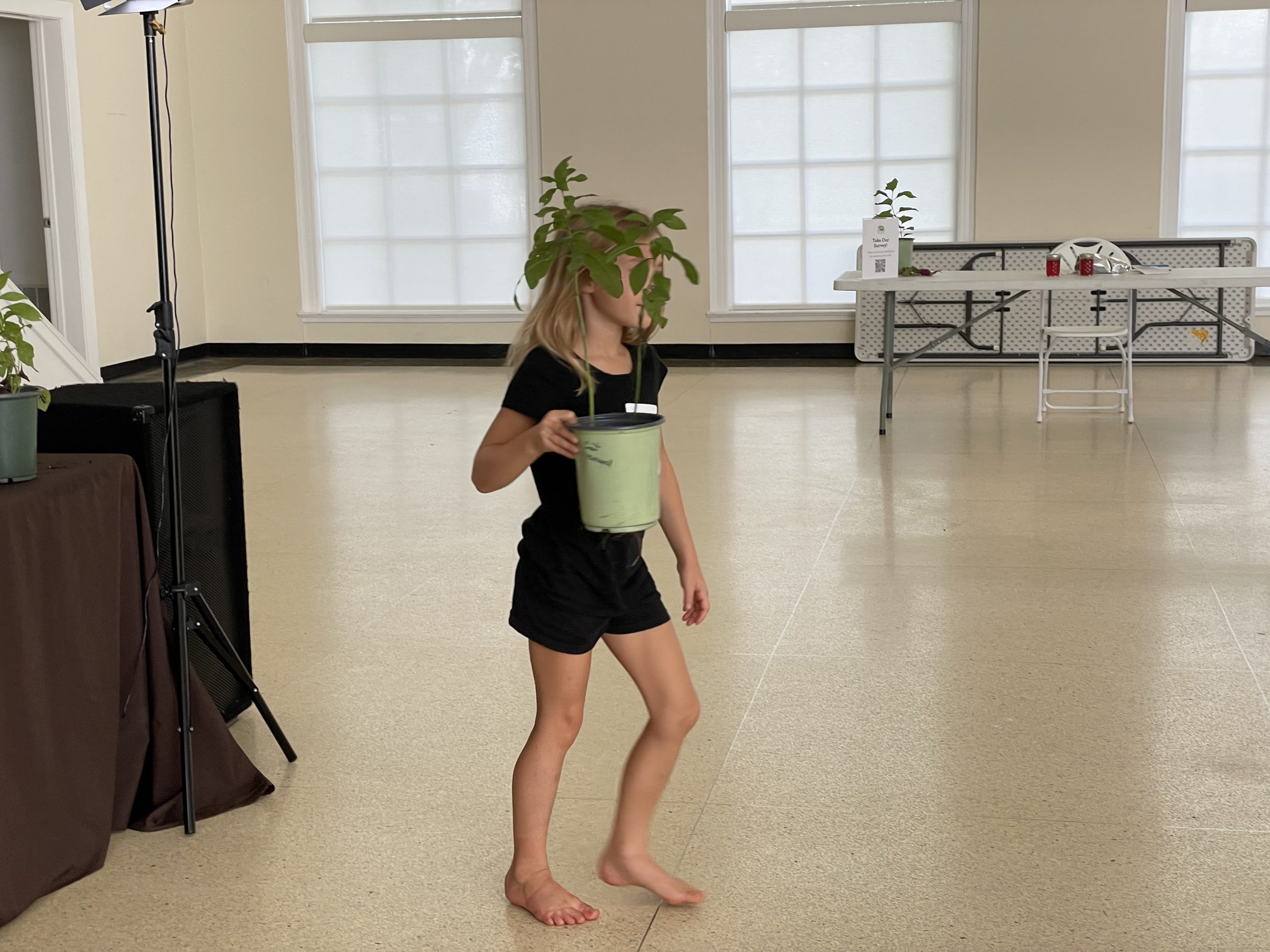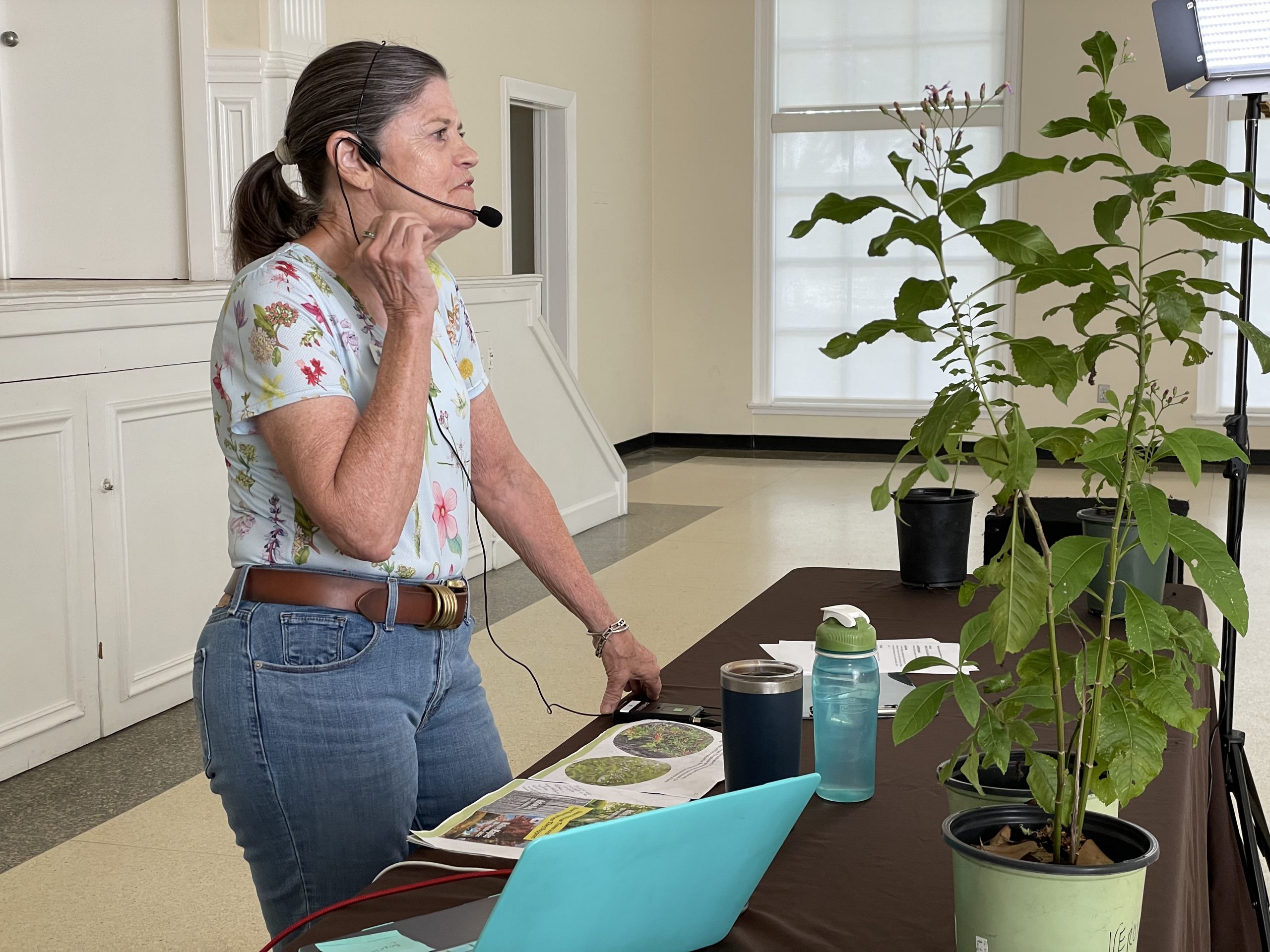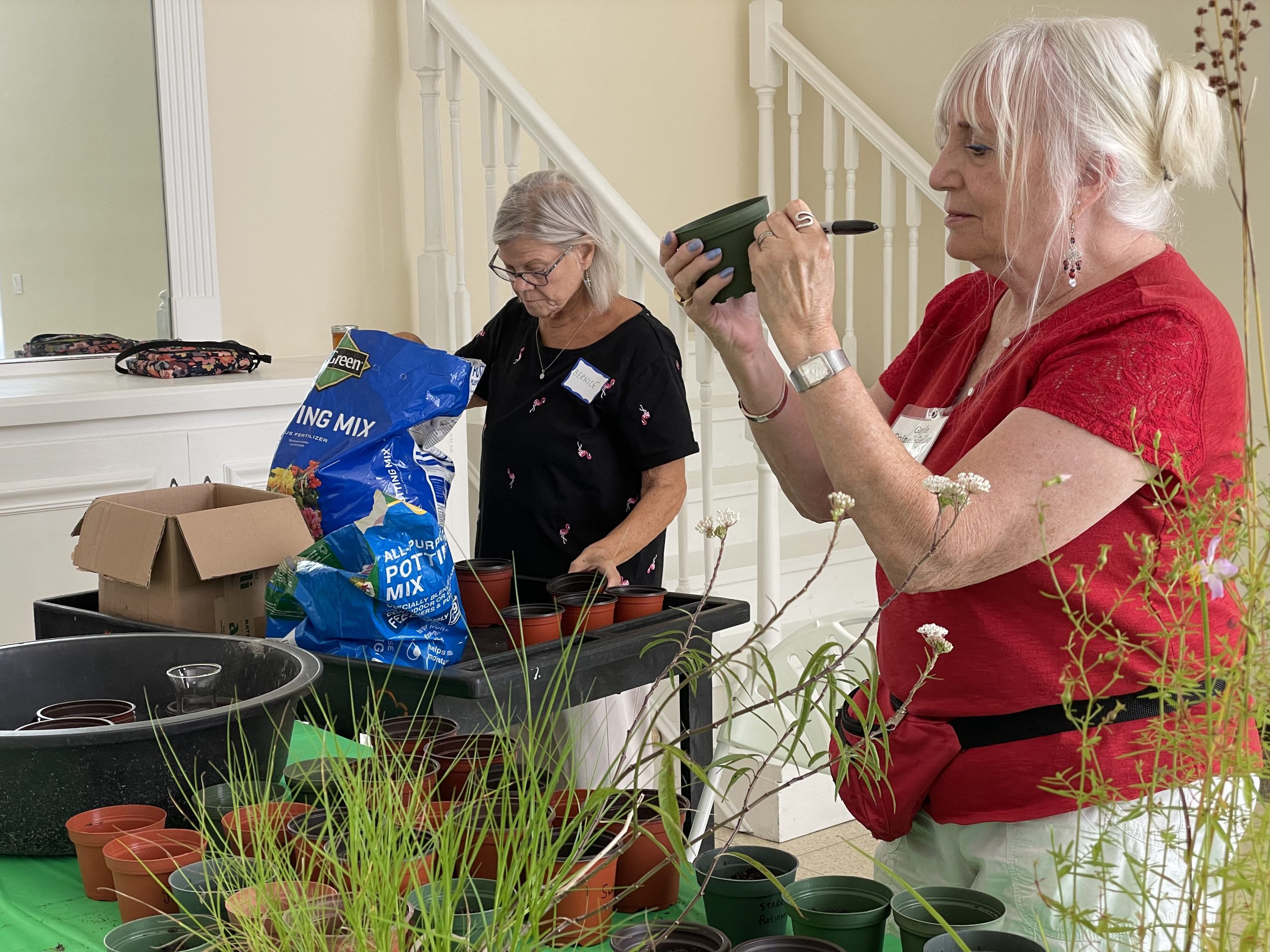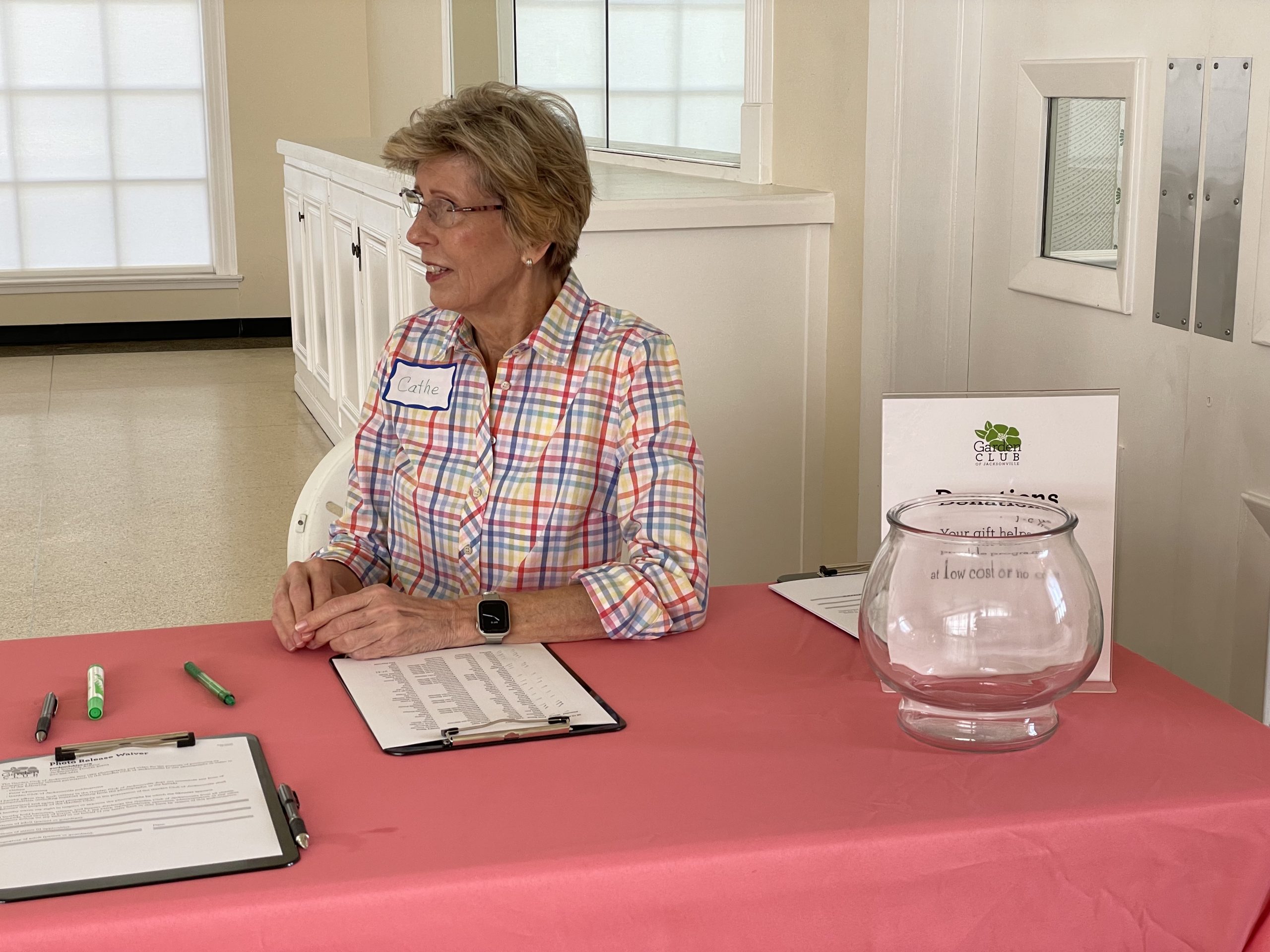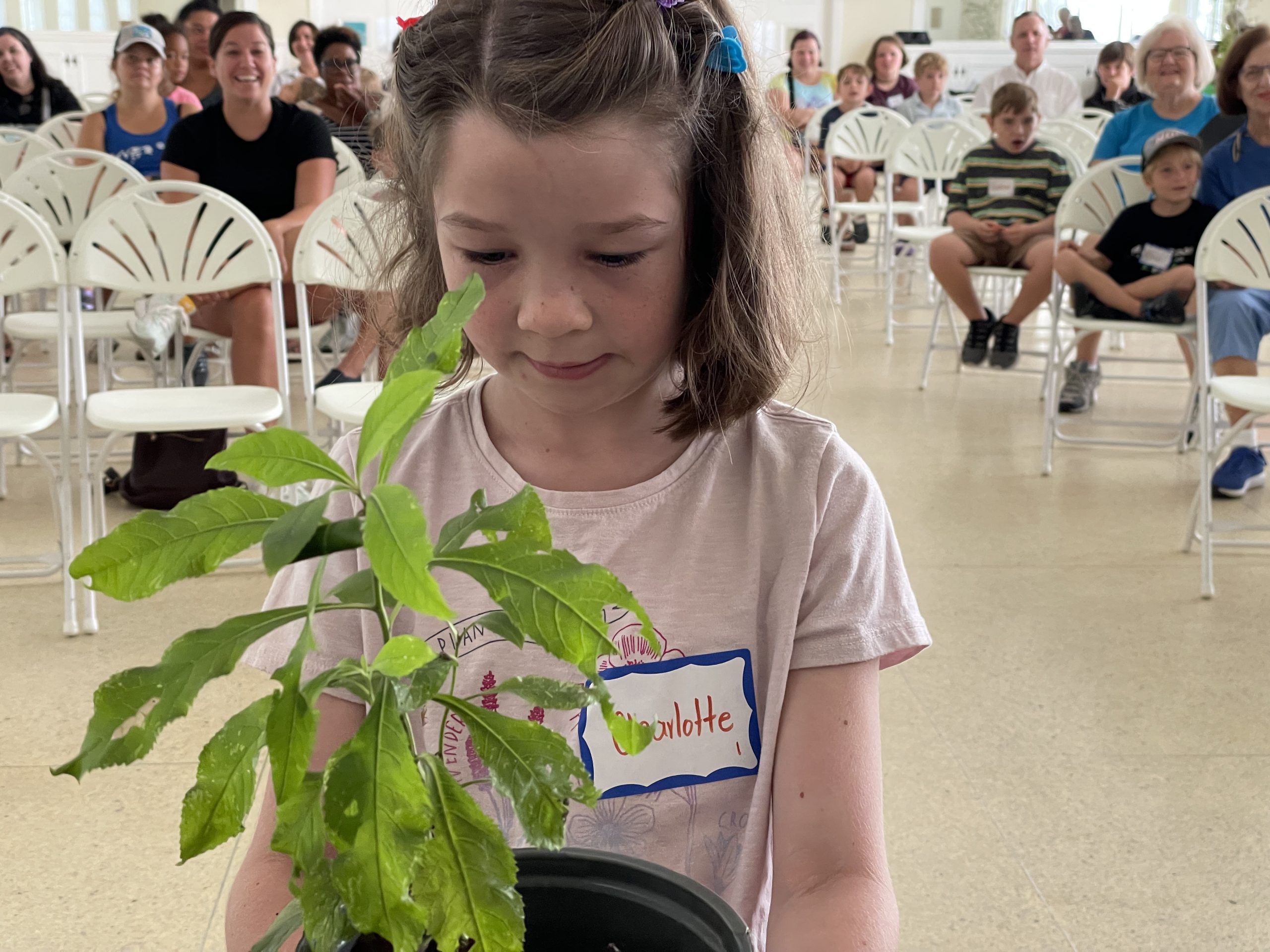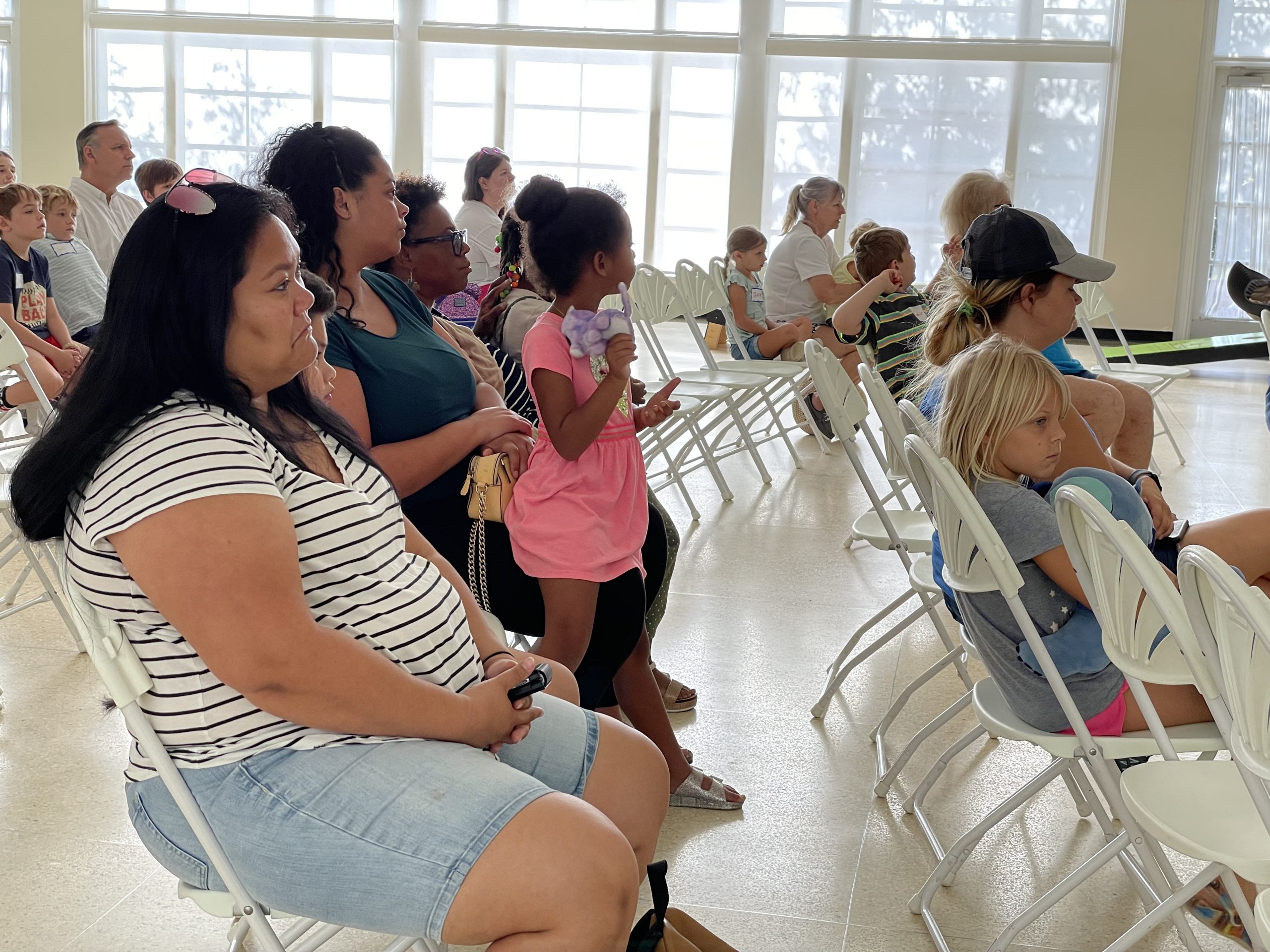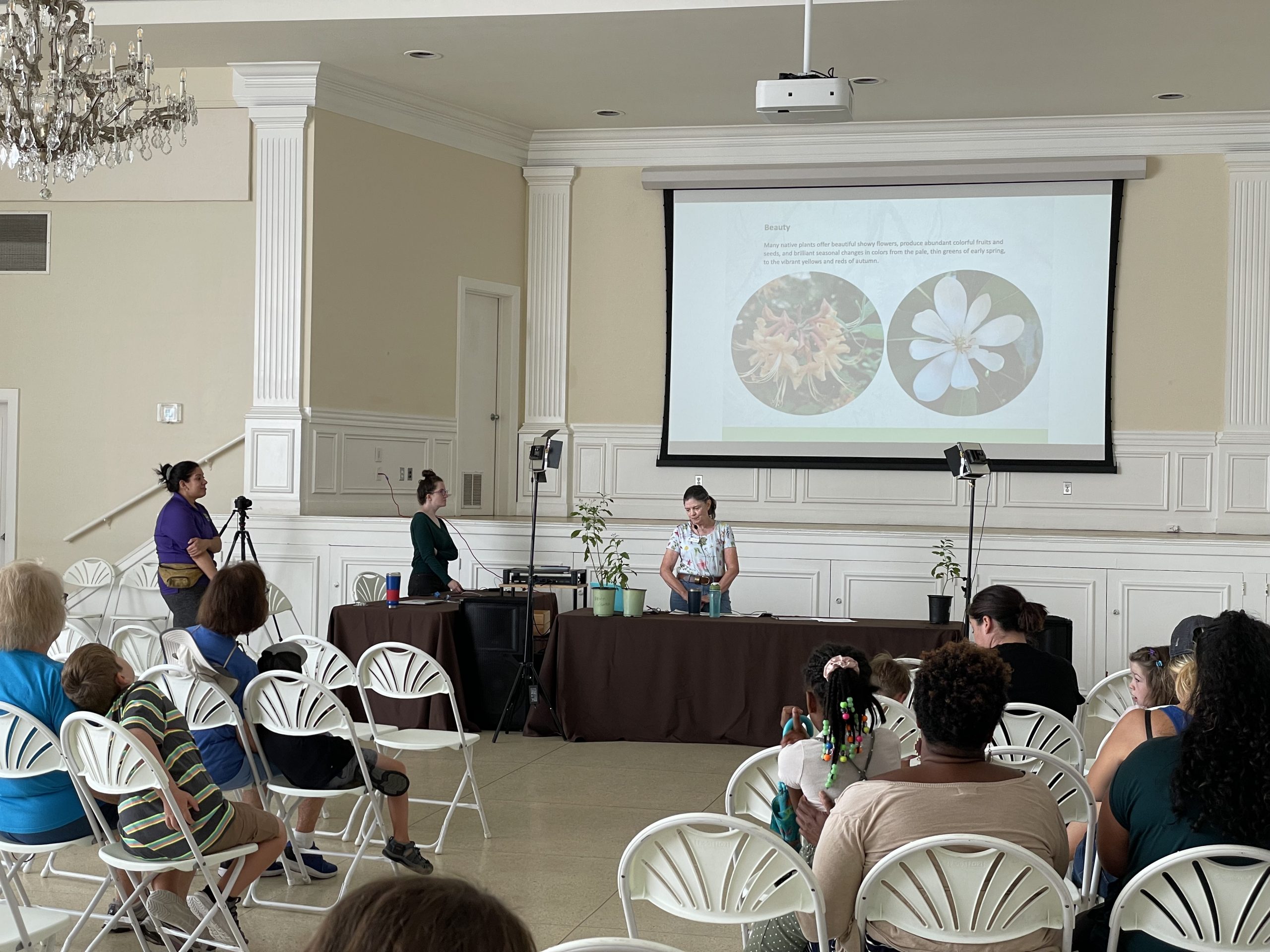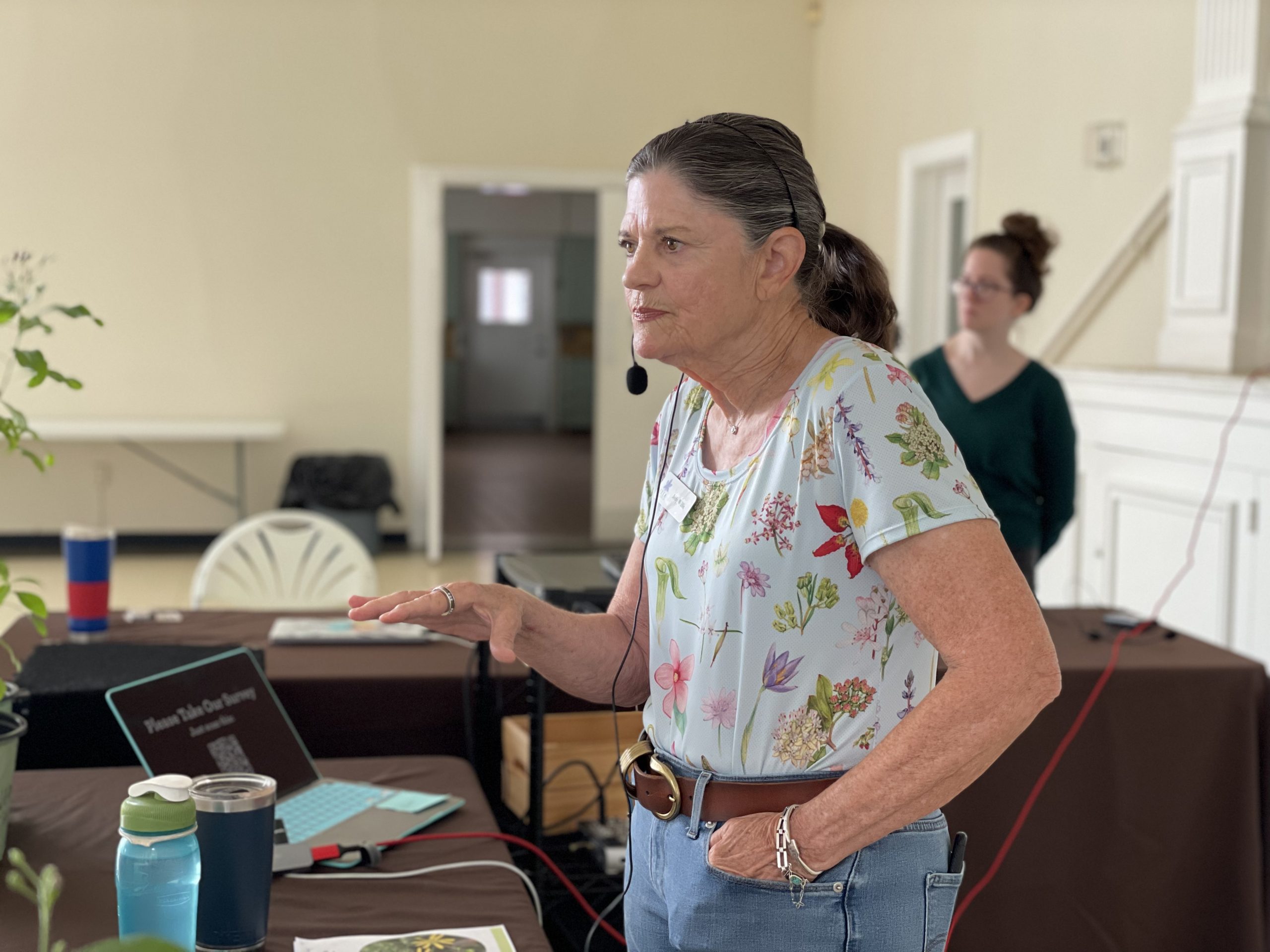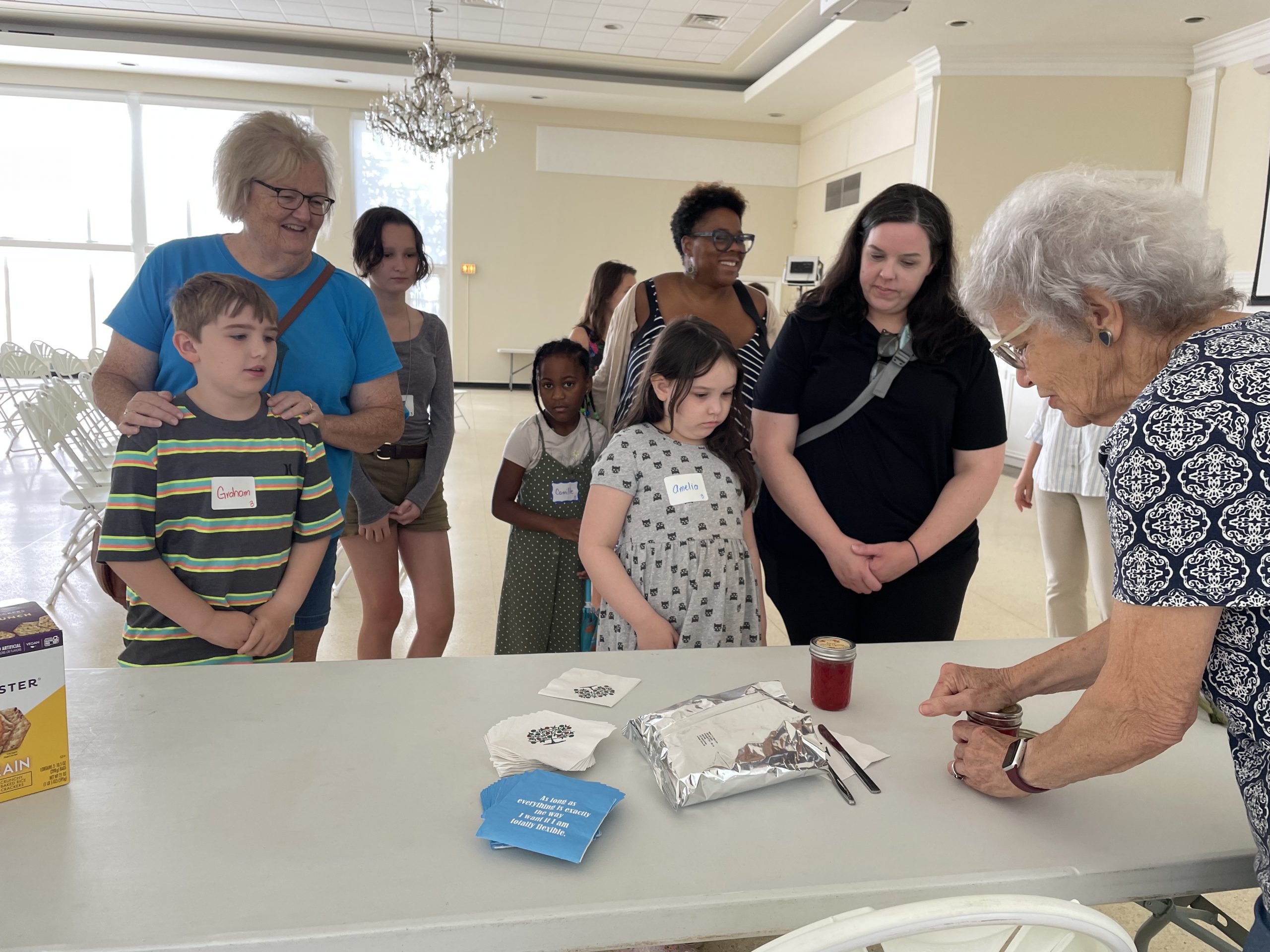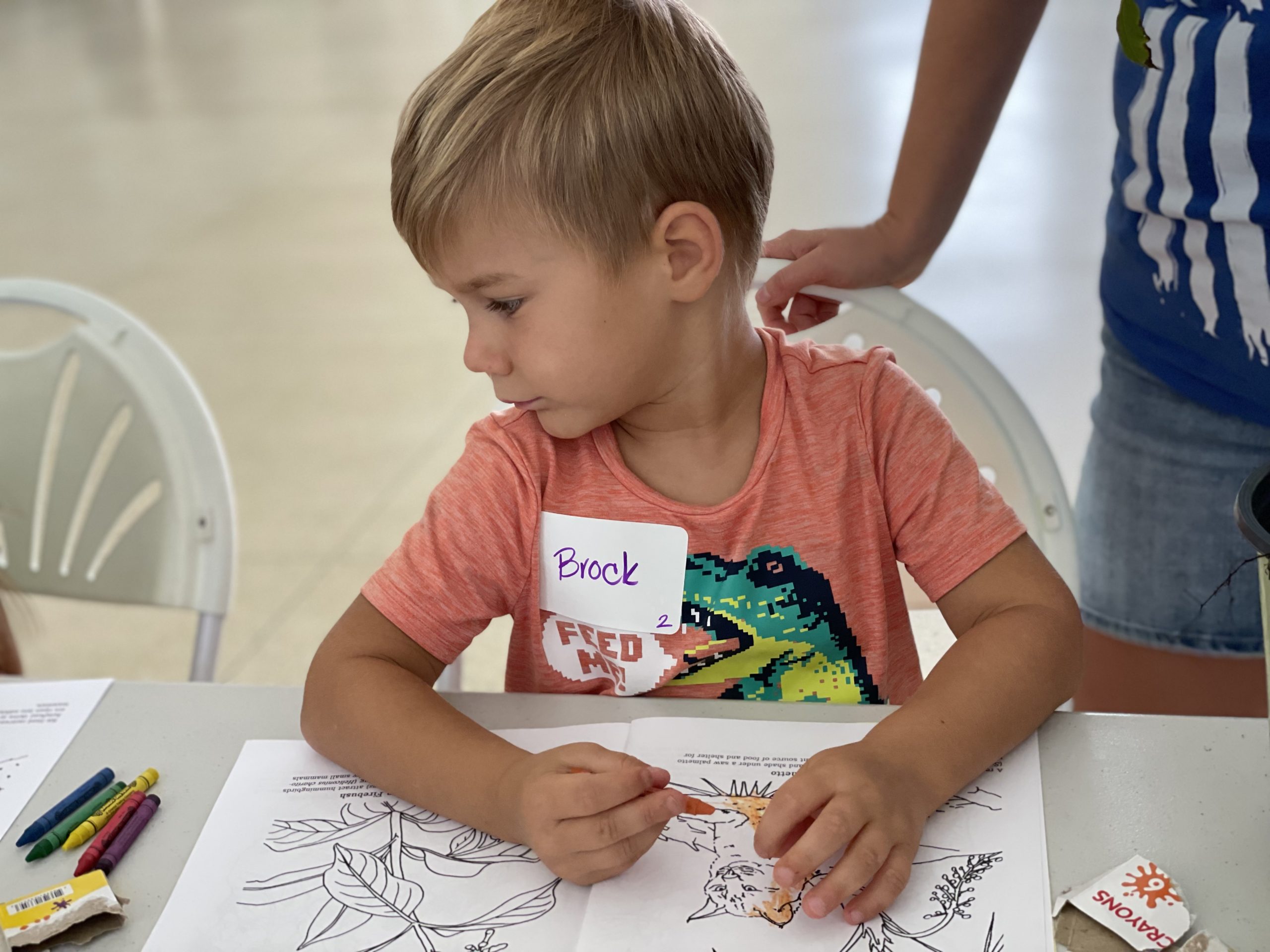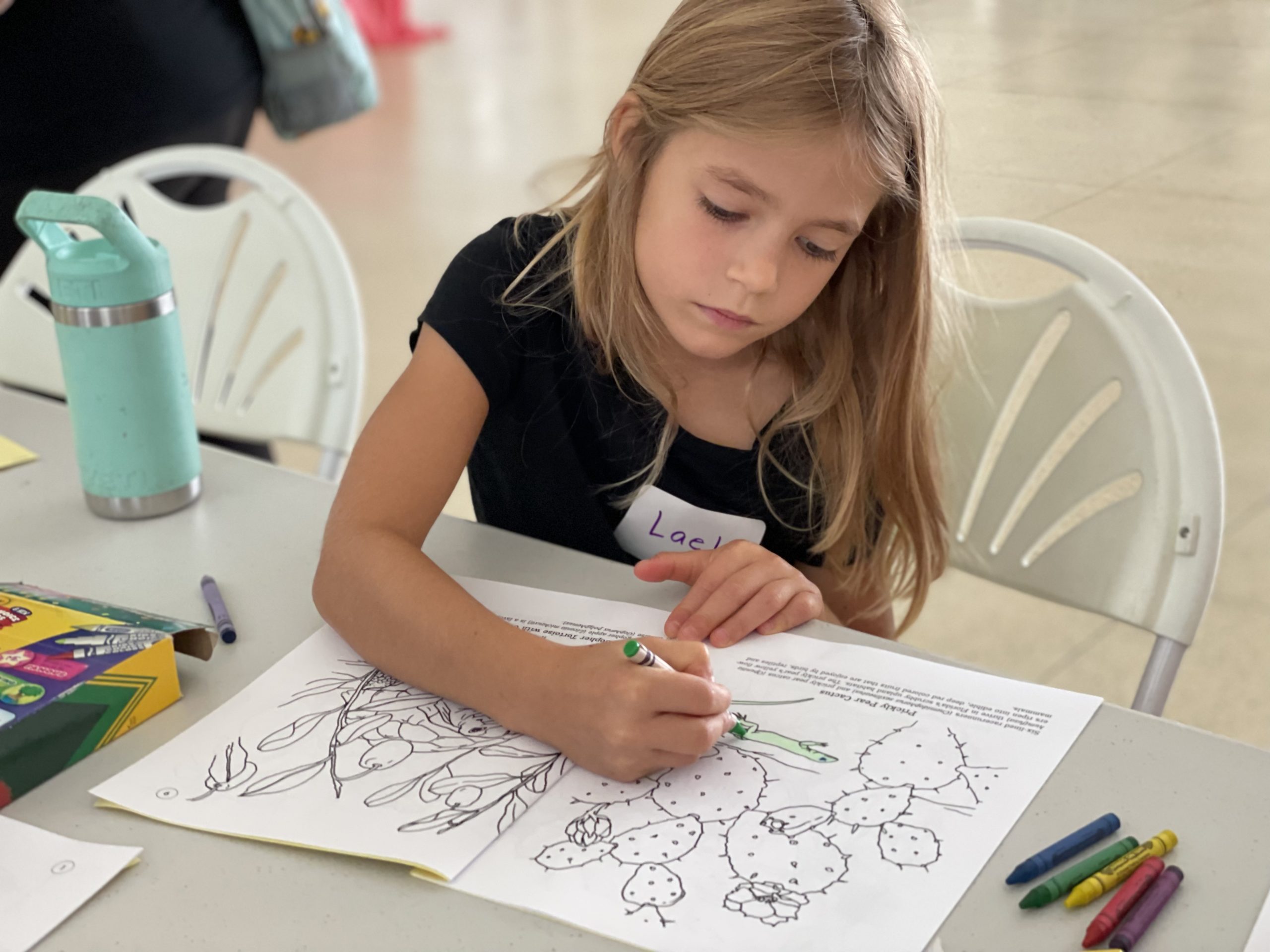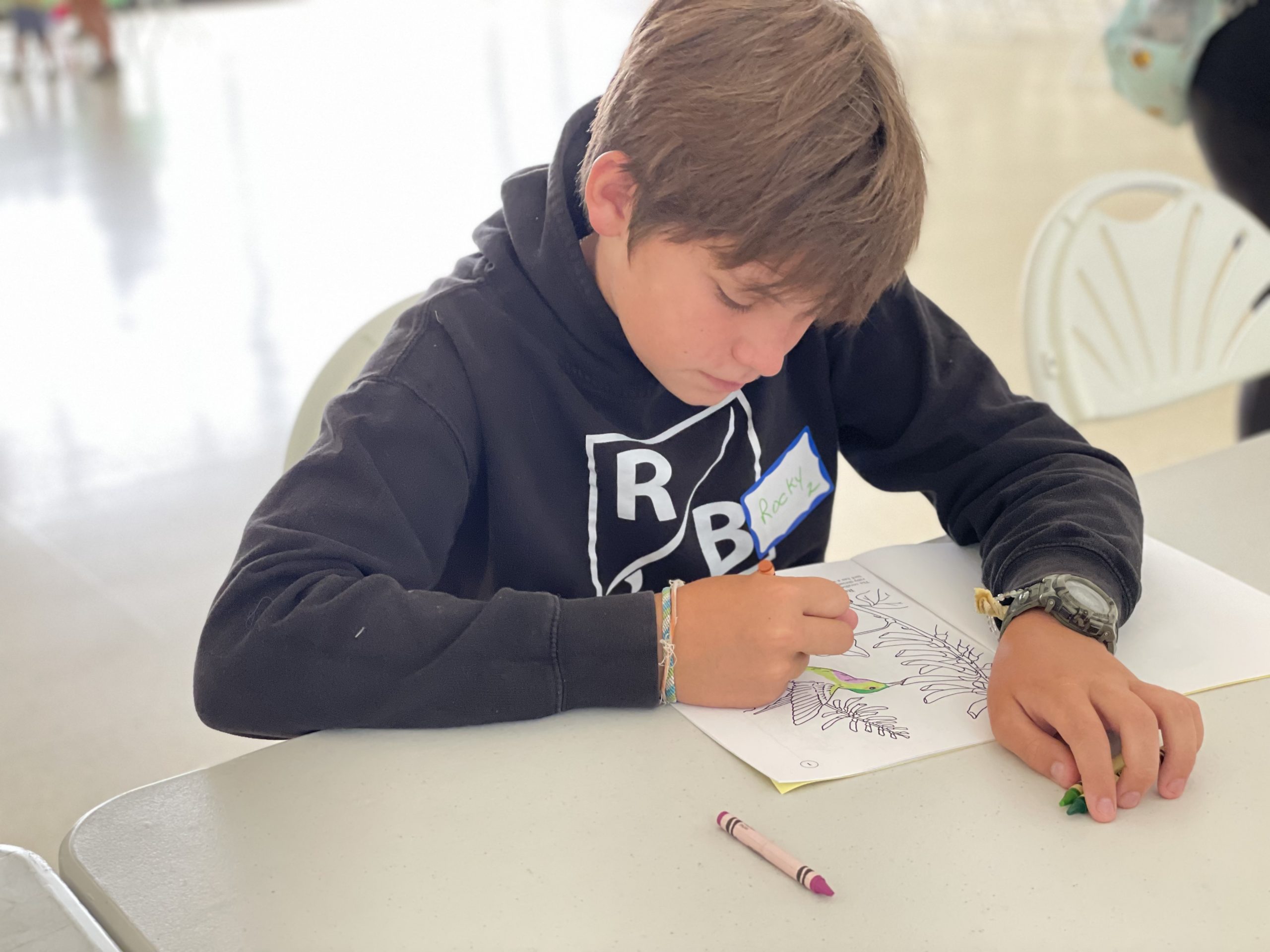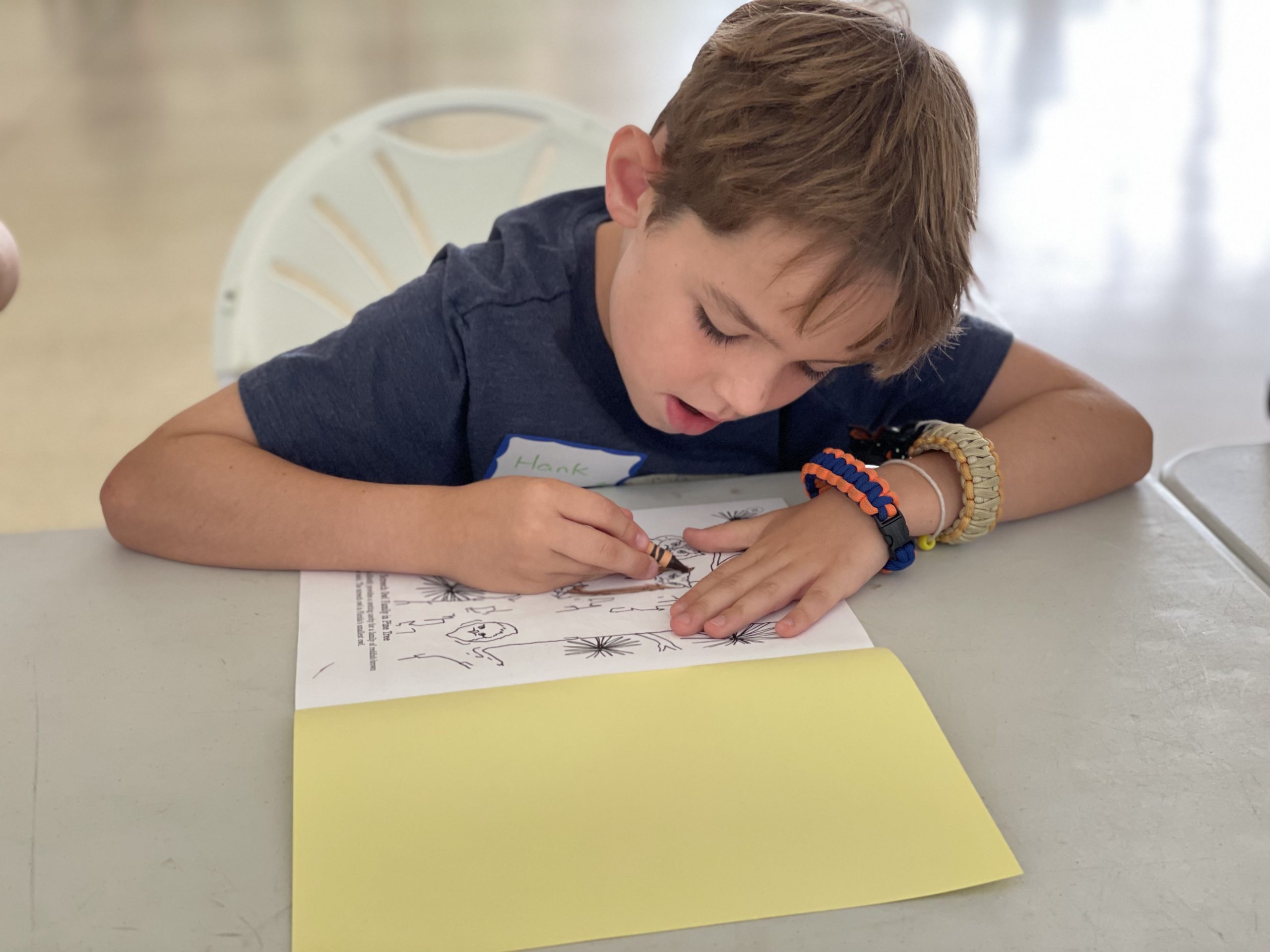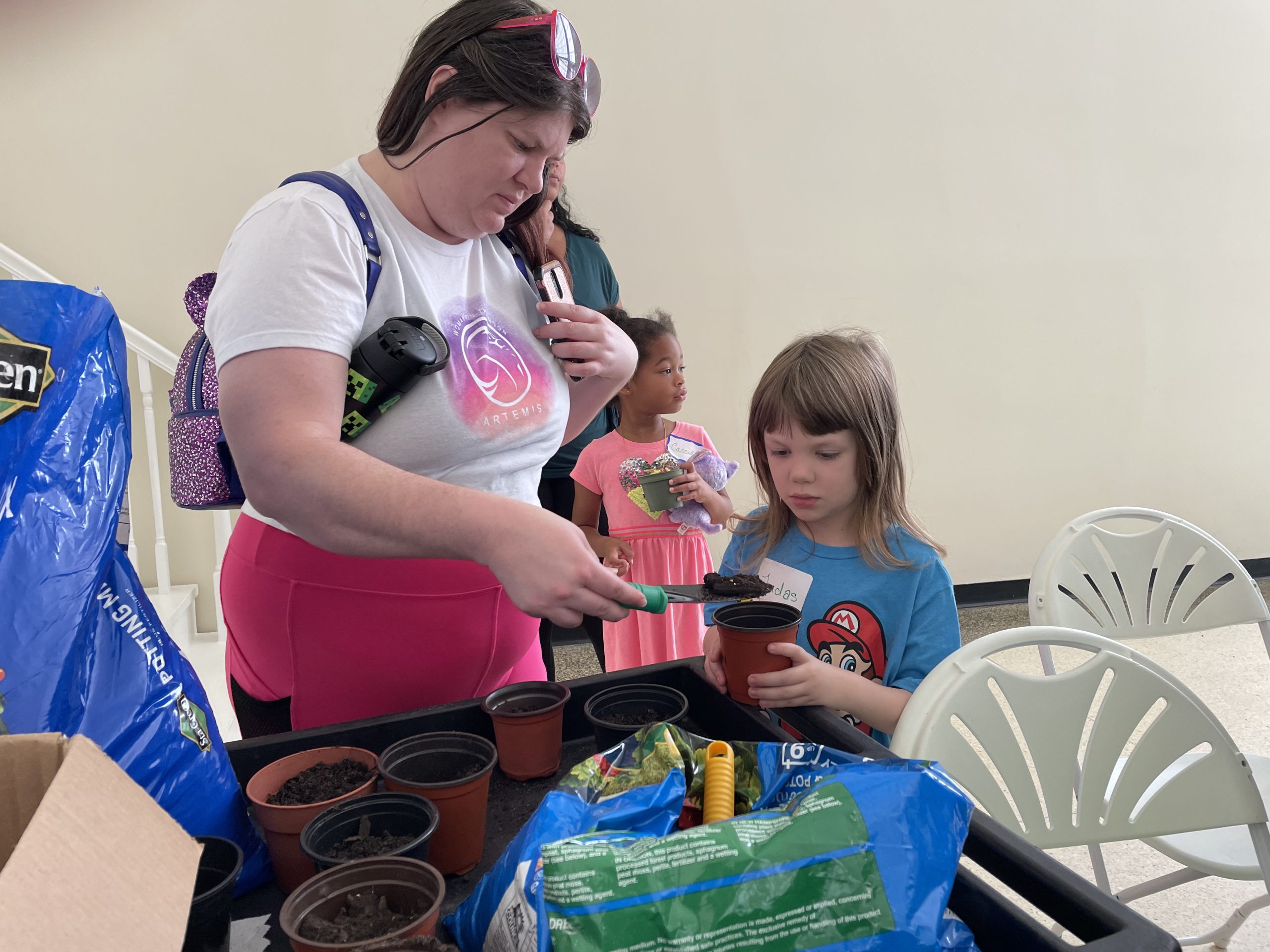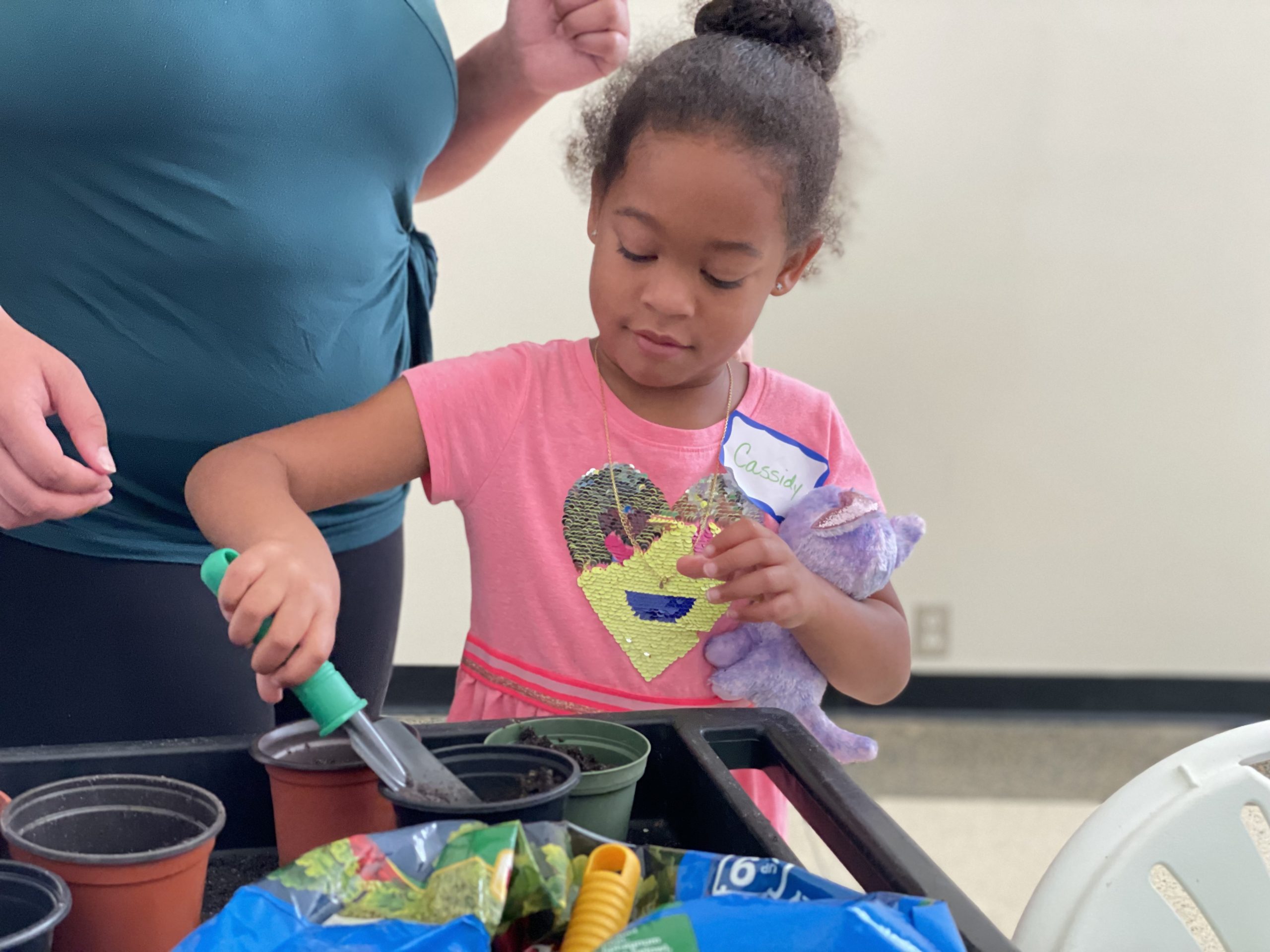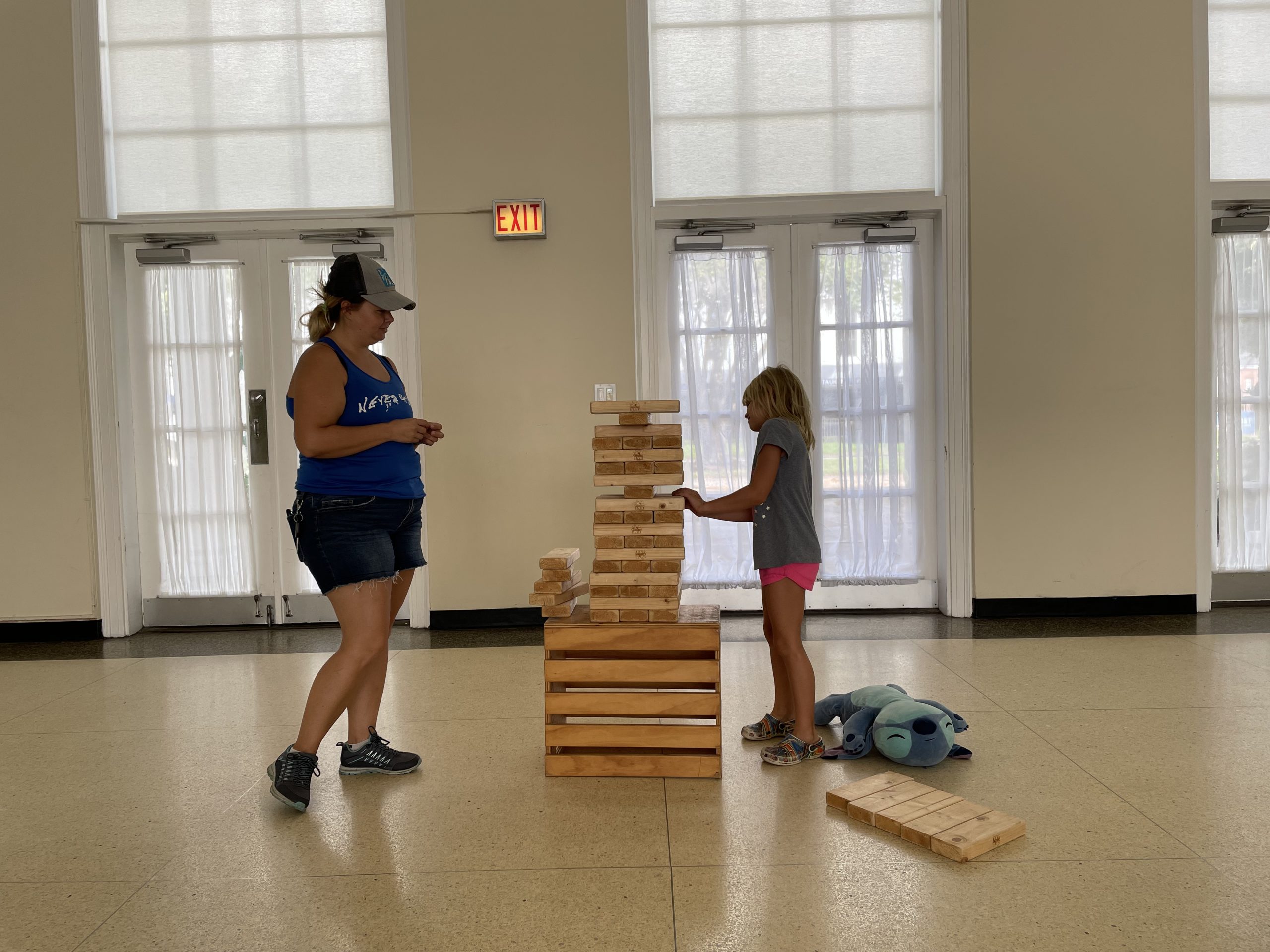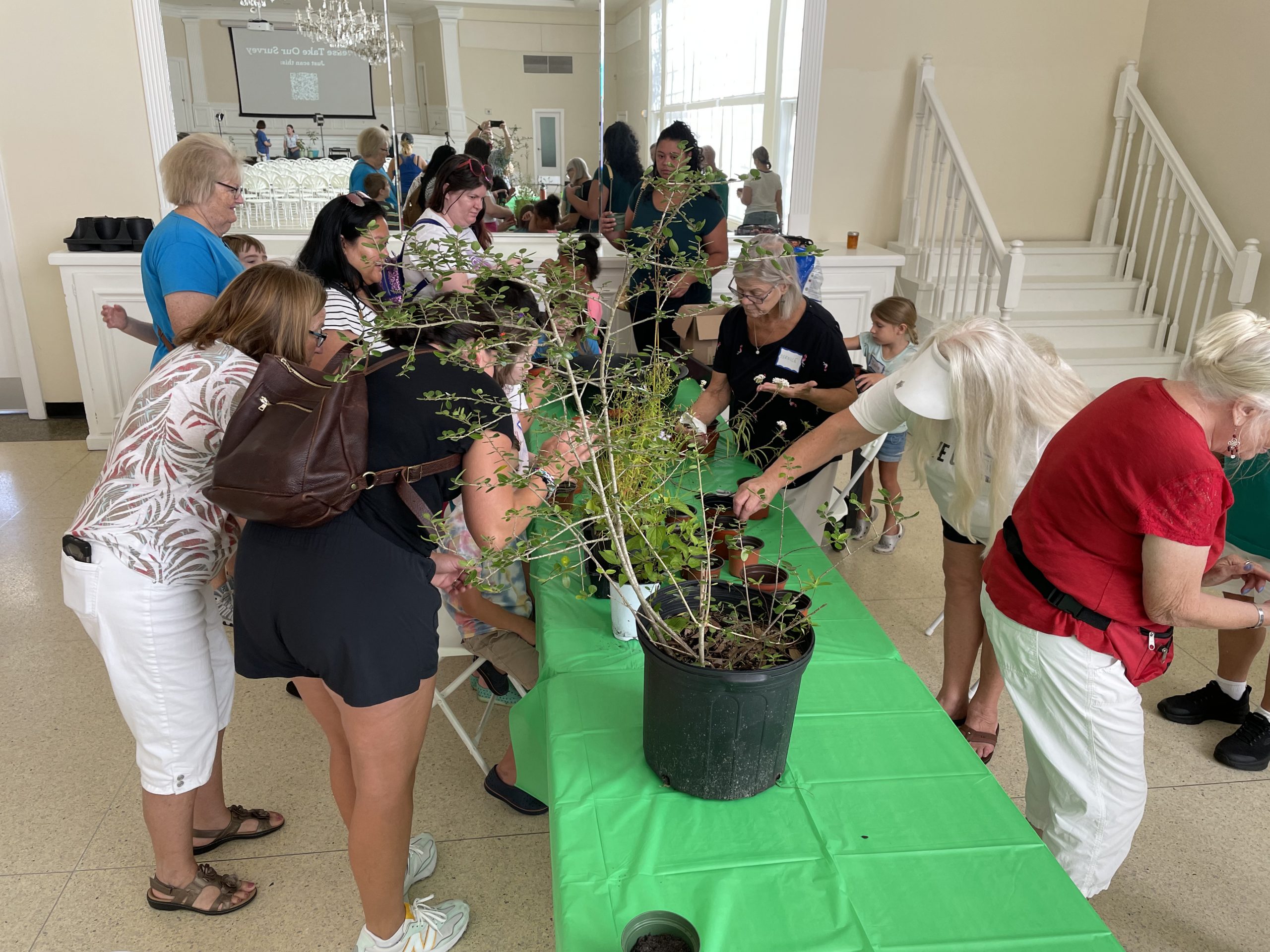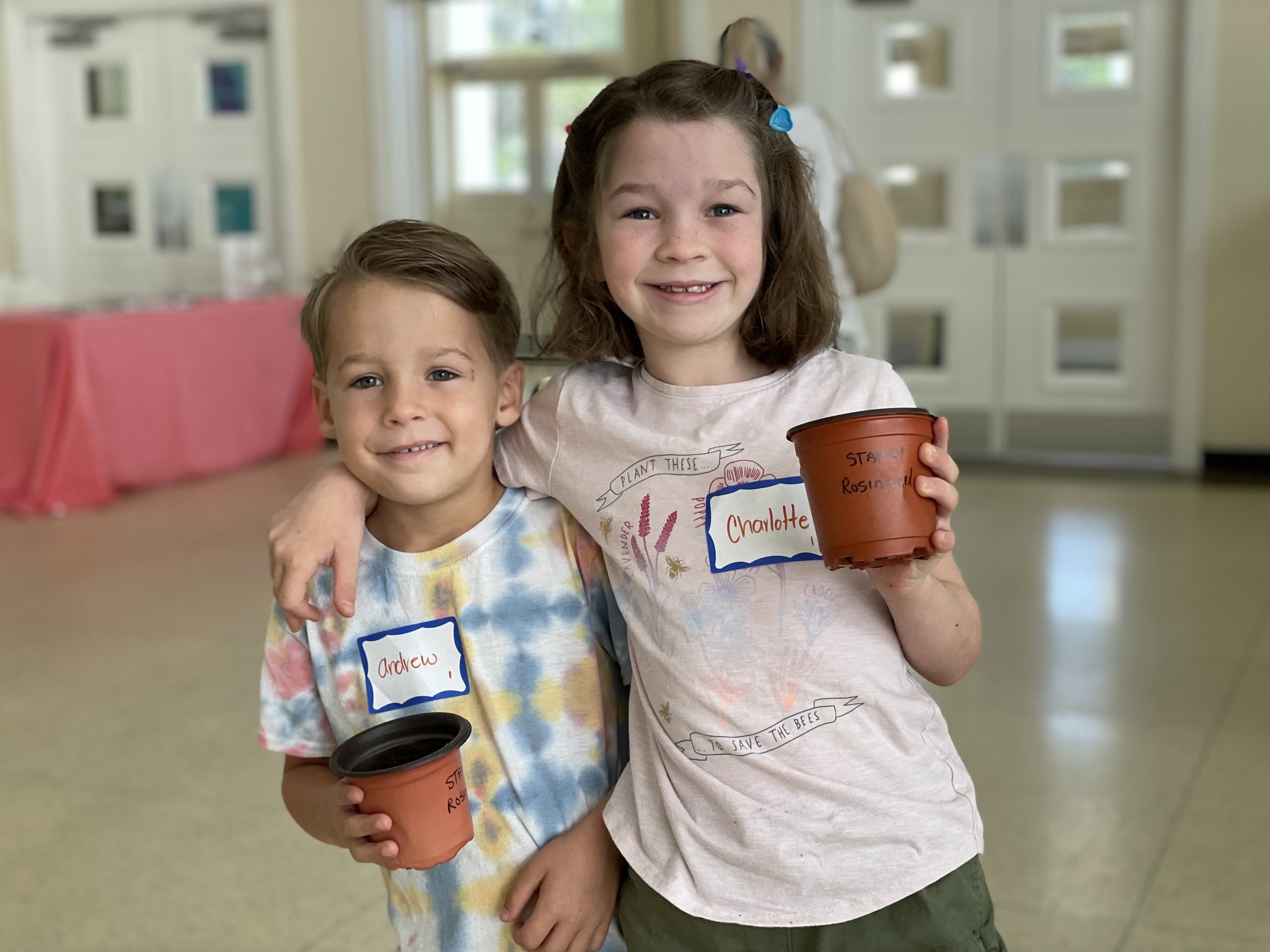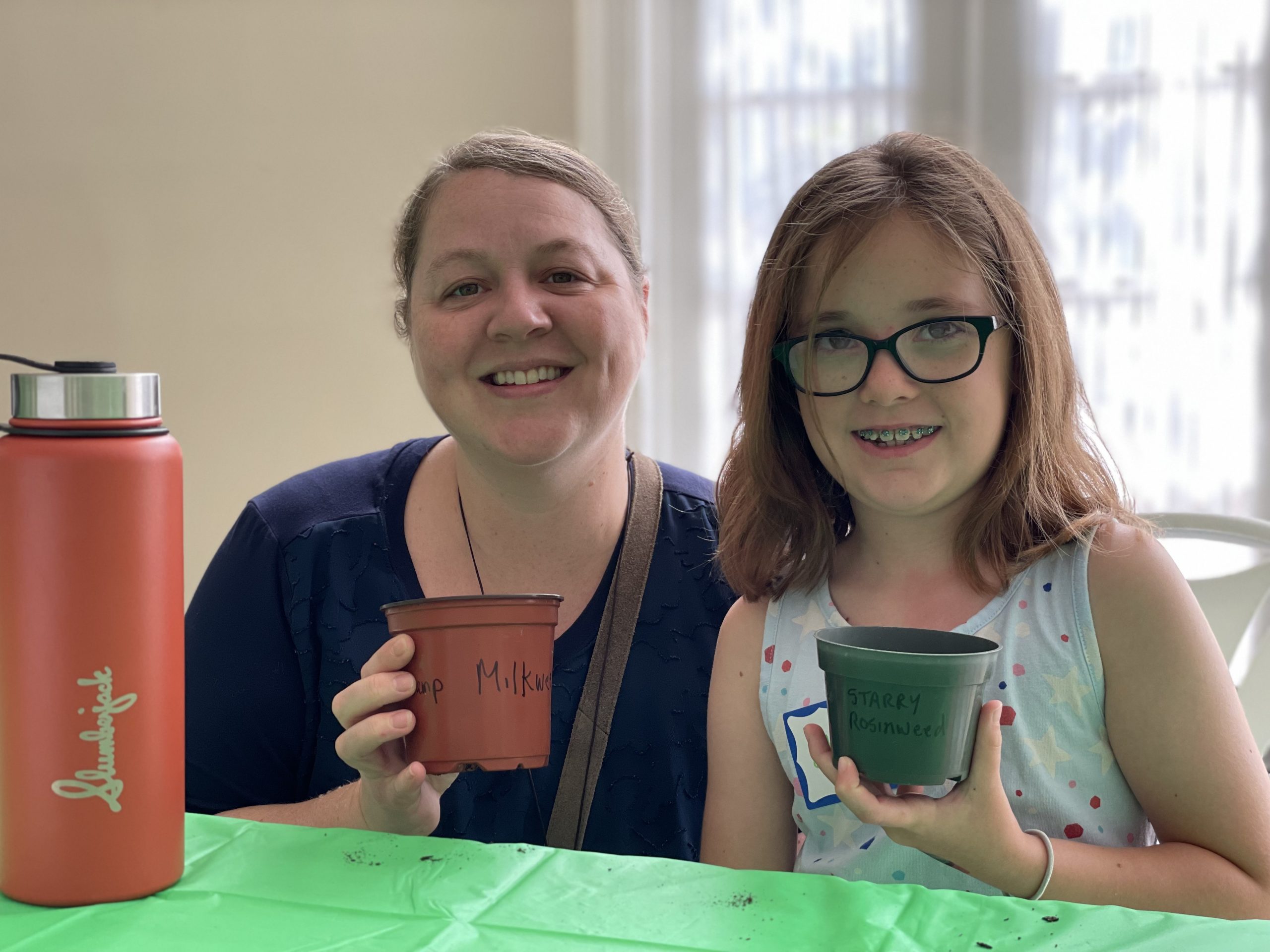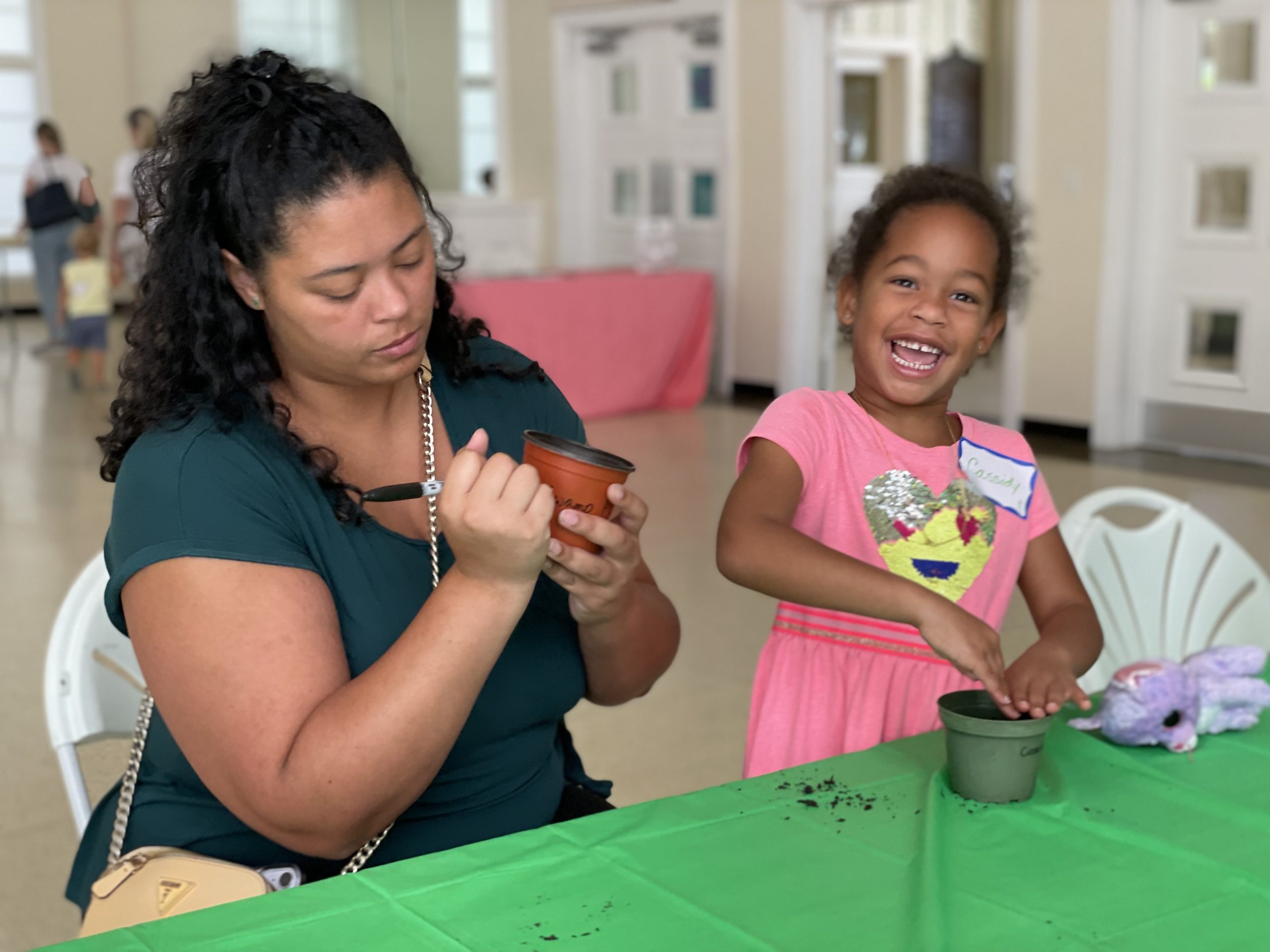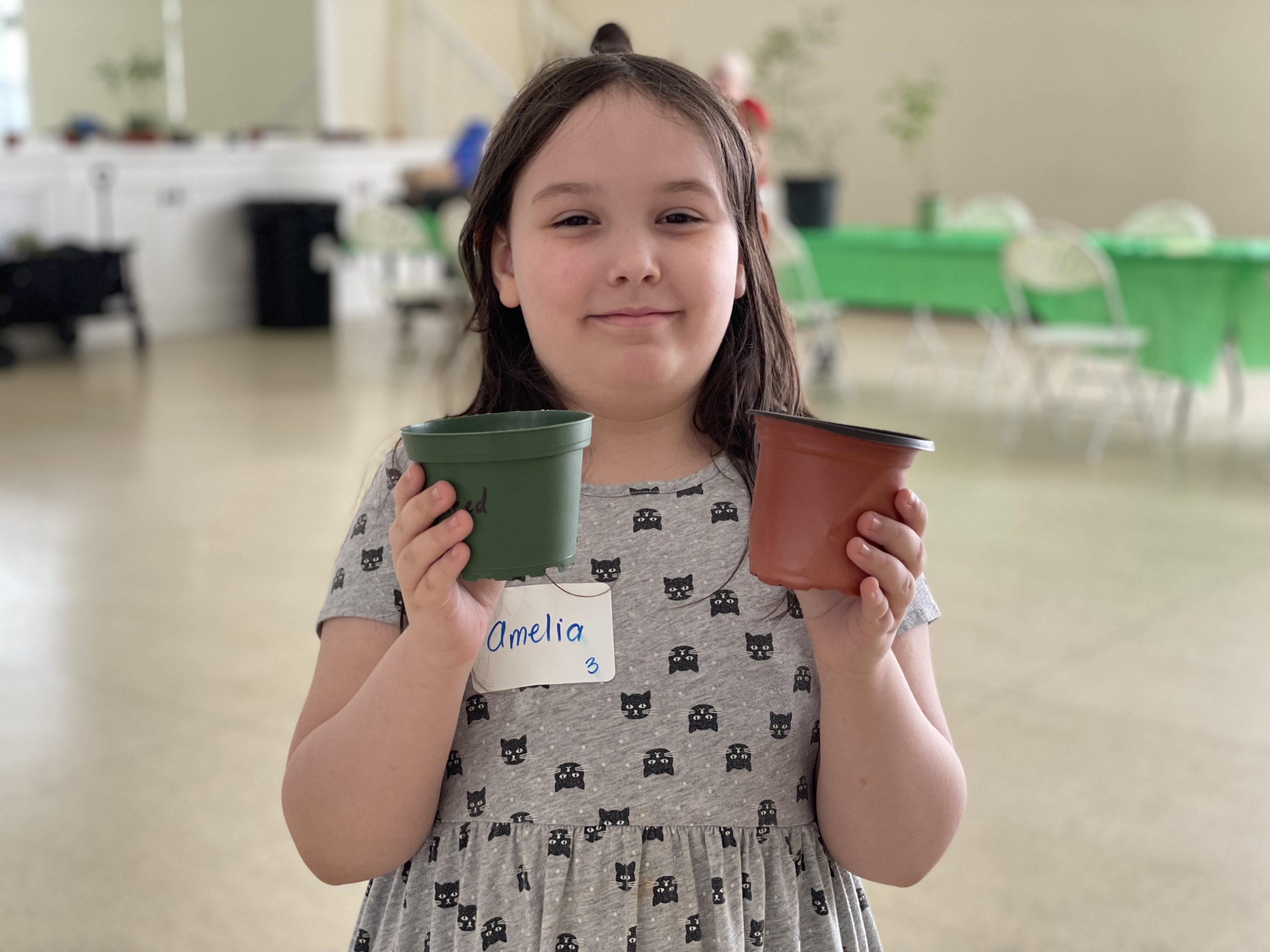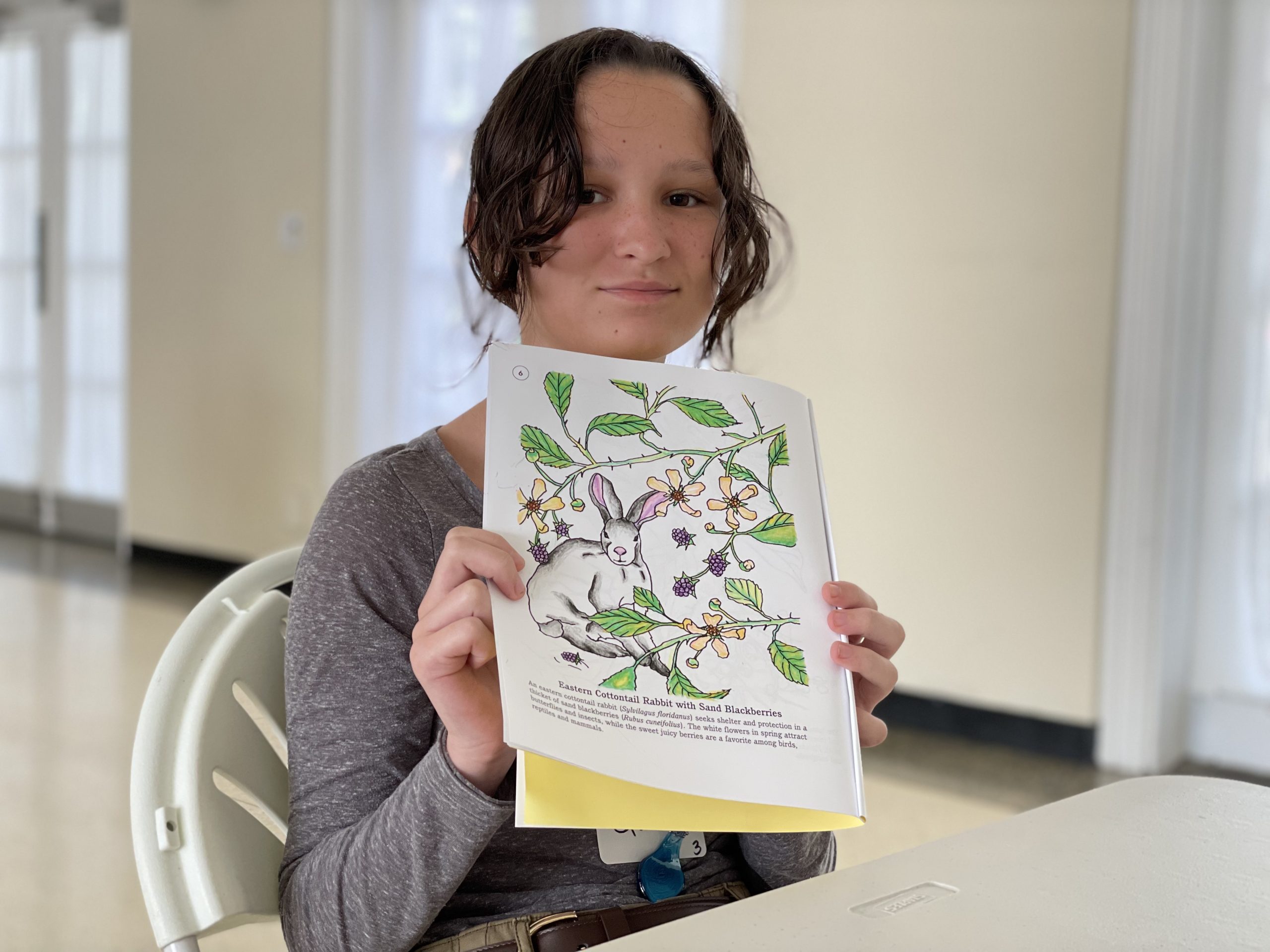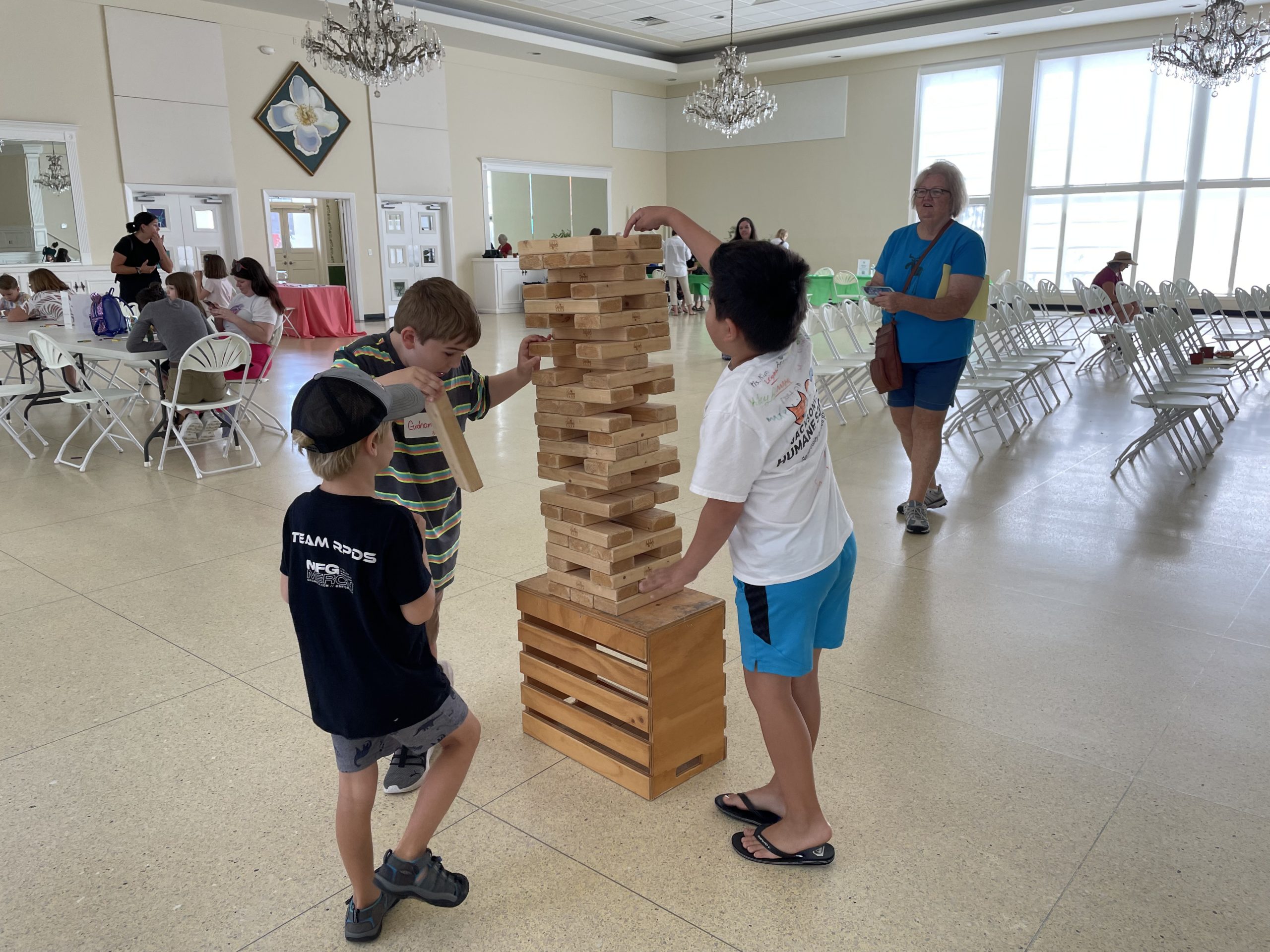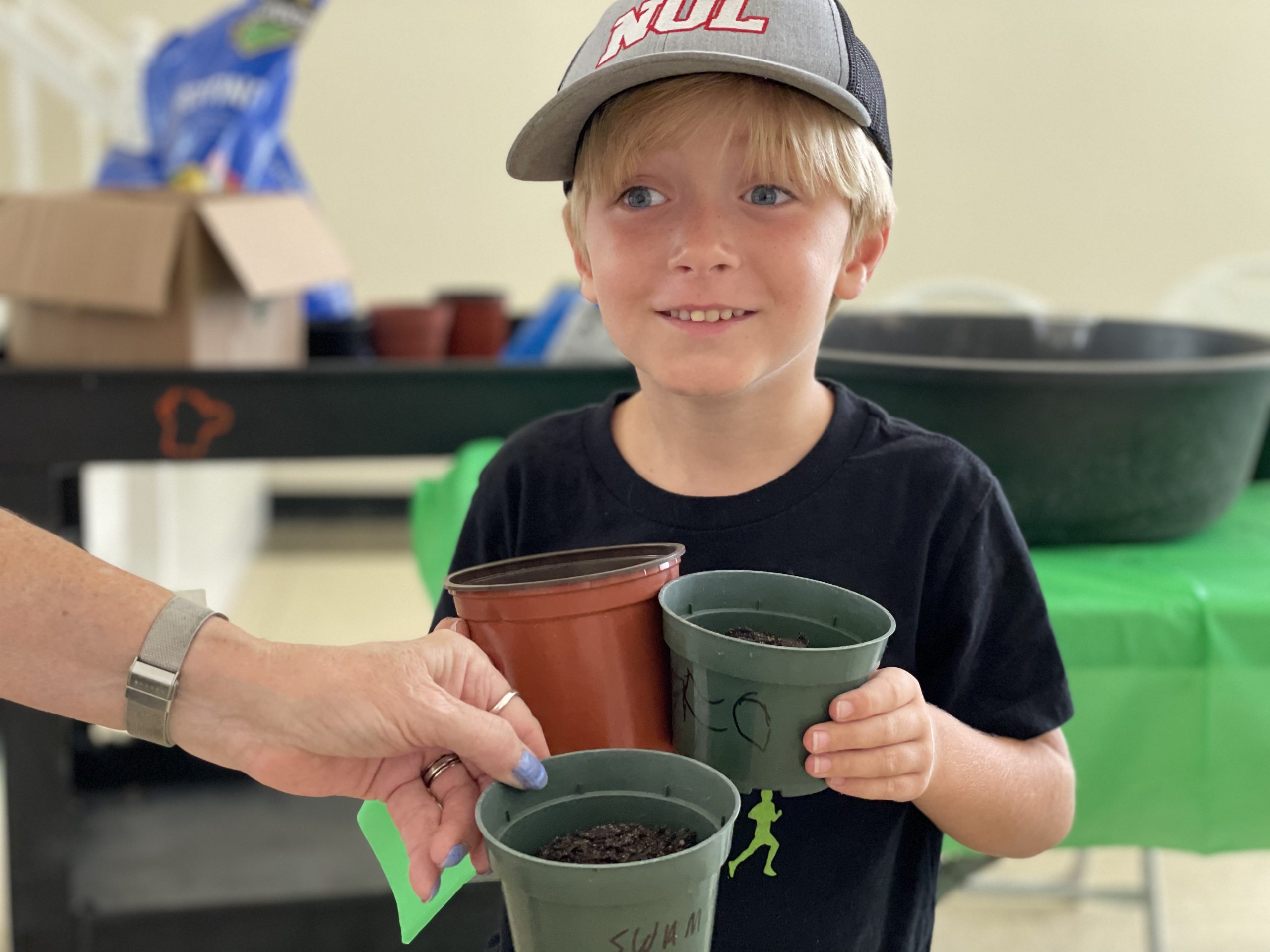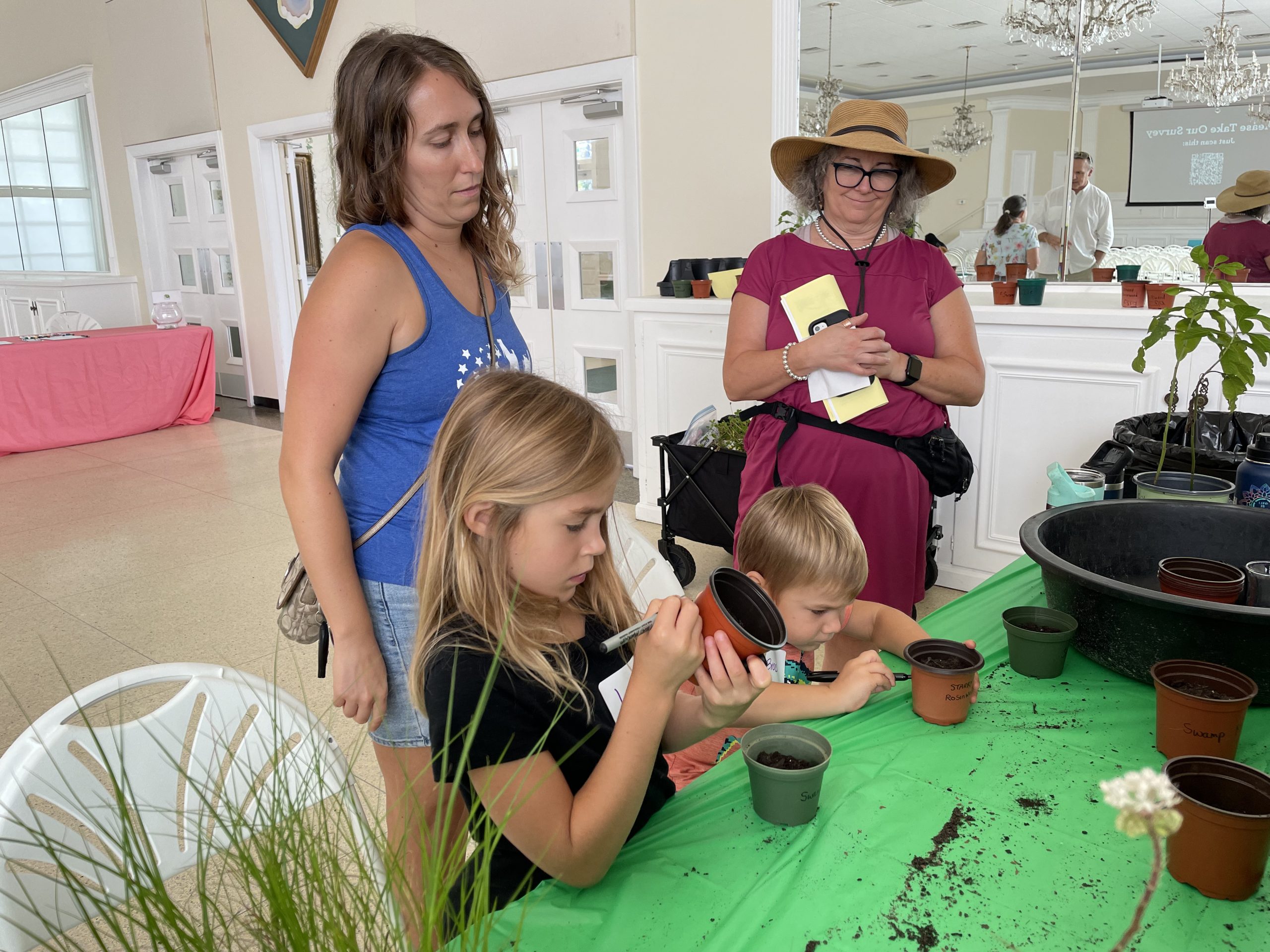On August 12 children and their families learned about the importance of growing native plants and how they are crucial to supporting wildlife by providing food, places to nest, and by storing and cleaning water from rainfall and runoff.
Members of the Ixia Chapter of the Florida Native Plant Society shared examples of native species and help children plant seeds to take home and grow and guided children in a coloring book activity with pictures of native plants and animals. Children also had the opportunity to win a potted plant by answering questions correctly, such as how many native caterpillars an occupied birds nest can eat a day. A whopping 250 on average!
Lastly, children had the opportunity to enjoy a special jam made from beautyberry. Have you heard of beautyberry? It’s a native, vibrantly pink-purple colored berry that can have a somewhat spicy taste.
Beautyberry Facts
- Beautyberry plants typically grow four to five feet tall and wide, although they have been known to reach nine feet.
- Their bright purple berries grow around the plants’ stems in plump clusters, making for a beautiful winter show.
- They are low maintenance, easy-to-grow and a food source for many native birds, including robins, cardinals, mockingbirds and woodpeckers.
- The genus name Callicarpa means “beautiful fruit.”
- Beautyberry roots, leaves and branches were used by various Native American tribes for medicinal purposes to treat malarial fevers, rheumatism, dizziness, stomachaches and dysentery.
- In the early 20th century, farmers would crush the leaves and place them under the harnesses of horses and mules to repel mosquitoes and other biting bugs.
- Though not very palatable raw since they tend to be bitter, they can be cooked and sweetened to make jellies, sauces and wines.
